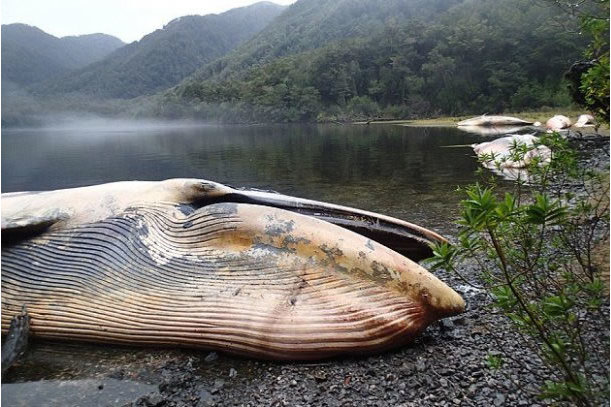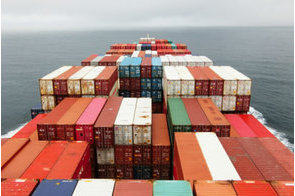Growing species of harmful algae pose threat to ecosystem

Summary
Occurrence of HABs can lead to impaired seafood security and decreased water quality.
Microorganisms have great impacts on human lives. They play a role in the production of many foods consumed by humans. Microorganisms are also used in medicine, biotechnology and ecology. For instance bacteria in the environment are responsible for producing energy sources like carbon and nitrogen. Photosynthetic algae support healthy aquatic ecosystems. However, under certain conditions, groups of algae become harmful to the ecosystems that depend on them. These algae that are injurious to plant, animal and human lives are known as harmful algal blooms (HAB).
HABs are present in nearly all aquatic environments and they are naturally-occurring. Considering the fact that aquatic waters cover two-thirds (or 72 percent) of the earth's surface, various studies on HABs have shown that these microorganisms cause direct and indirect negative impacts on coastal resources and human health. In the tropics, people fall sick as a result of consumption of seafood contaminated by toxins produced by HABs. Algal toxins are associated with several conditions, including paralysis, diarrhea, amnesia, and fish poisoning. HABs are also responsible for the depletion of fish stocks and destruction of fish farms and bringing disease and death to sea animals as well as humans.
Last month, UNESCO released a report that documents the increase of harmful algal blooms. The publication is said to be the first ever global compendium of HABs. The report was jointly published by UNESCO's Intergovernmental Oceanographic Commission (IOC), Scientific Committee on Oceanic Research (SCOR) and the International Society for the Study of Harmful Algae. The IOC says it runs a HAB Programme whose goal is to foster scientific research on HABs in order to understand their causes, predict their occurrences, and mitigate their effects.
Various forms of algae play significant roles in aquatic ecology, including providing the food base for some organisms in the marine food chain. Under certain conditions, the population of micro algae in freshwater or marine water systems rapidly increases (referred to as algal "blooms") leading to discolouration of the water. Research has shown that not all high-biomass blooms are harmful but nearly one-fourth of these blooms produce toxins. When the microalgae are ingested by shellfish or other marine organisms, they bioaccumulate the toxins and transfer them to animals and humans through the food web. The largest and most complex marine algae are called seaweeds, while the most complex freshwater forms are the Charophyta.
The increasing severity and frequency of HABs are traced to complex causes, but mostly attributed to climate change and human activities – such as human waste, chemical run-off, overfishing, tourism and increased maritime traffic. UNESCO said these activities alter conditions favouring the development of HABs. Scientists say eutrophication (which is high concentration of nutrients from human waste in the water) encourages algal blooms.
Occurrence of HABs can lead to impaired seafood security and decreased water quality. When HABs contaminate coastal resources, they disrupt the livelihoods of local residents and the sustenance of human populations in those communities is threatened. HAB-related costs are estimated at several billion dollars annually.
The UNESCO report provides data on major harmful algal bloom incidents, for example, along the coasts of Florida in the United States – where data has been compiled since the mid-19th century – India and Oman. Deaths of wild animals (turtles, dolphins, manatees, whales, birds) have been linked to the algal toxins accumulating in food webs. In terms of its impact on the environment, the high-biomass bloom, even when it is non-toxic, can cause ecological and/or economic damage. For example, the non-toxic seaweed Ulva infamously disrupted the 2008 Olympics in China.
HABs incidents are also on the increase in the Adriatic and Baltic seas. Data from the report identifies 174 algal and 100 toxin-producing species grouped in 24 chemically different classes responsible for 11 different human health conditions.
The report also examines policies to contain these toxic marine organisms. While the publication says HABs cannot be eliminated, their negative impacts can be alleviated through coordinated research, monitoring, preventive policies and mitigation plans.
While support mechanisms for monitoring HABs' threat to human and ecosystems have to be strengthened, HABs can be prevented by reducing nutrient pollution, and limiting infrastructure construction that create water confinement.
In places where they have recorded a decrease in HABs, such as the Seto Inland Sea of Japan, policy decisions led to improvements in the treatment of waste waters and fish-farming technology. The Seto Inland Sea's monitoring programme has been in place for 50 years.
Humans are also advised that since it is impossible to see with the naked eye if there are harmful algae in the water, fishing in the middle of discoloured water is discouraged. Eating fish that was caught when dead is also dangerous.
According to IOC, swimmers are advised to never swim if they cannot see their feet when the water level is at their knees. They should always look out for warning signs against algal blooms.
Martins Hile is Executive Editor of Financial Nigeria magazine and Financialnigeria.com
Related
-
Nigeria records $87 billion in trade misinvoicing in 10 years
Trade misinvoicing is a major type of illicit financial flow and can be used to evade customs duties, VAT taxes, and ...
-
UNCTAD to host forum on making trade sustainable
The event will discuss policies and initiatives that can make trading systems more inclusive, environmentally friendly, and ...
-
Nigeria and the International Oil Pollution Compensation Fund
The IOPC funds represent not just an international obligation, but a lifeline for nations that live with the daily risk of ...










